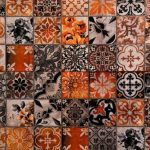The British Museum is a treasure trove of human history and culture that houses an extraordinary collection of art and artifacts spanning over two million years. With such an extensive collection, selecting just a few highlights can be a challenge.
However, some works stand out for their historical significance, artistic beauty, and cultural impact. Now, with luggage storage near the British Museum and several transit options, you can easily make exploring this storied museum part of your next trip! Here are seven can’t-miss works at the British Museum that offer a glimpse into the richness of human civilization.
1. The Rosetta Stone: A Key to Ancient Languages
Discovered in 1799, the Rosetta Stone is perhaps the most famous artifact in the British Museum. This granodiorite stele was created in 196 BC and was instrumental in deciphering Egyptian hieroglyphs.
The stone bears the same text in three scripts: Greek, Demotic, and Hieroglyphic. The Greek text’s translation provided scholars with the means to understand hieroglyphs, unlocking the secrets of ancient Egyptian civilization. We can’t overstate its significance in linguistics and Egyptology, making it a visitor must-see.
2. The Elgin Marbles: Masterpieces of Classical Greece
The Elgin Marbles are a collection of classical Greek marble sculptures, friezes, and architectural pieces that were originally part of the Parthenon and other buildings on the Acropolis of Athens.
From the 5th century BC, these pieces are prime examples of classical Greek art. They depict various scenes, including battles between gods and giants and processions of horses and humans. Despite controversy over their removal from Greece, they remain a testament to the skill and aesthetic of ancient Greek artists.
3. The Sutton Hoo Helmet: A Window Into Anglo-Saxon England
Discovered in a ship burial in Suffolk, England, the Sutton Hoo Helmet dates back to the 7th century. This remarkable artifact provides insight into early medieval England, particularly the Anglo-Saxon period.
The helmet’s intricate decoration and craftsmanship demonstrate the sophisticated metalworking skills of the time. Its discovery has significantly contributed to our understanding of the Anglo-Saxon elite’s culture, warfare, and artistry.
4. The Benin Bronzes: A Testament to African Craftsmanship
The Benin Bronzes are a group of several thousand metal plaques and sculptures. These masterpieces from the Kingdom of Benin (present-day Nigeria) were created from the 13th century onwards and were part of the royal court’s decoration.
They depict scenes of court life, human figures, and animals, showcasing the extraordinary skill of the Benin craftsmen. These bronzes are important for understanding West African history and art, offering a different narrative of a culturally rich and sophisticated society.
5. The Assyrian Lion Hunt Reliefs: Ancient Mesopotamian Art
From the ancient palace of Ashurbanipal in Nineveh (modern-day Mosul, Iraq), the Assyrian Lion Hunt reliefs came to be in the 7th century BC. These alabaster panels depict the Assyrian king hunting lions, symbolizing the king’s power and bravery.
The reliefs are renowned for their detailed realism and dynamic representation of movement. They provide a vivid picture of Assyrian court life, royal ideology, and artistic achievement.
6. The Lewis Chessmen: Intriguing Symbols of Medieval Society
Discovered on the Isle of Lewis in Scotland, the Lewis Chessmen were created in the 12th century and are believed to be of Norse origin. These chess pieces, carved from walrus ivory and whale teeth, are notable for their distinctive and somewhat whimsical design.
They depict kings, queens, bishops, knights, rooks, and pawns in a style that is both unique and reflective of Norse culture. The Lewis Chessmen provide a look into medieval life, the spread of chess as a game of strategy and intellect, and the cultural interactions between the Norse and other European societies.
7. The Hoa Hakananai’a: A Glimpse Into Rapa Nui (Easter Island)
Hoa Hakananai’a, a moai (statue) from Easter Island, is one of the most enigmatic artifacts in the British Museum. Dating back to approximately 1000-1200 AD, this basalt statue is believed to represent ancestral figures and was likely part of the island’s complex ritual and social systems.
Its presence in the museum sparks conversations about colonialism and cultural heritage, but it also highlights the artistic and engineering skills of the Rapa Nui people. The moai’s imposing stature and mysterious history continue to fascinate scholars and visitors alike.
A Journey Through Time
The British Museum serves as a profound portal to the past, offering a vivid tableau of human history and culture.
This journey, encompassing everything from ancient scripts to medieval chess pieces, is a testament to our shared heritage and the unbroken thread of human creativity and resilience. The British Museum is one of a kind — a space where history echoes, encouraging reflection, learning, and a deeper understanding of our collective narrative.













